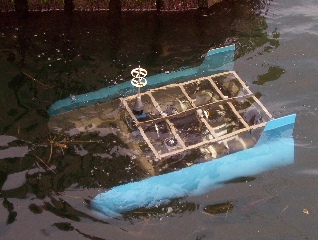AVPPO – Autonomous Vertically Profiling Plankton Observatory
At WHOI, the Martha’s Vineyard Coastal Observatory will soon become the homeport of a new observing platform called the Autonomous Vertically Profiling Plankton Observatory (AVPPO), which is designed to observe daily, seasonal, and annual changes in the coastal Atlantic Ocean ecosystem. A winch system drives a platform on a 15-minute trip from the seafloor to the surface. It is equipped with a range of instruments—35 sensors in all—that measure salinity, temperature, oxygen, water motion, water turbulence and clarity, light, chlorophyll, organic matter, the amount and types of zooplankton and phytoplankton present, along with the platform’s own orientation in the water. These measurements can be correlated with weather and storm events and will help us monitor the coastal ecosystem’s response to climate and other changes

The objectives of the profiling plankton observatory were:
- To provide high temporal resolution (one profile per hour) water column data on temperature, salinity, light transmission, up- and down-welling irradiance at five wave lengths, chlorophyll fluorescence, CDOM fluorescence (Dissolved Organic Matter), dissolved oxygen, and phyto and zooplankton composition and abundance at a vertical resolution of 1 cm or better.
- To provide preliminary data on the usefulness of a permanent profiling system at the MVCO site. The purpose of this system would be to detect the effects of stratification on the vertical distribution and composition of the plankton community in relation to strong wind events and data from remote sensing platforms.
